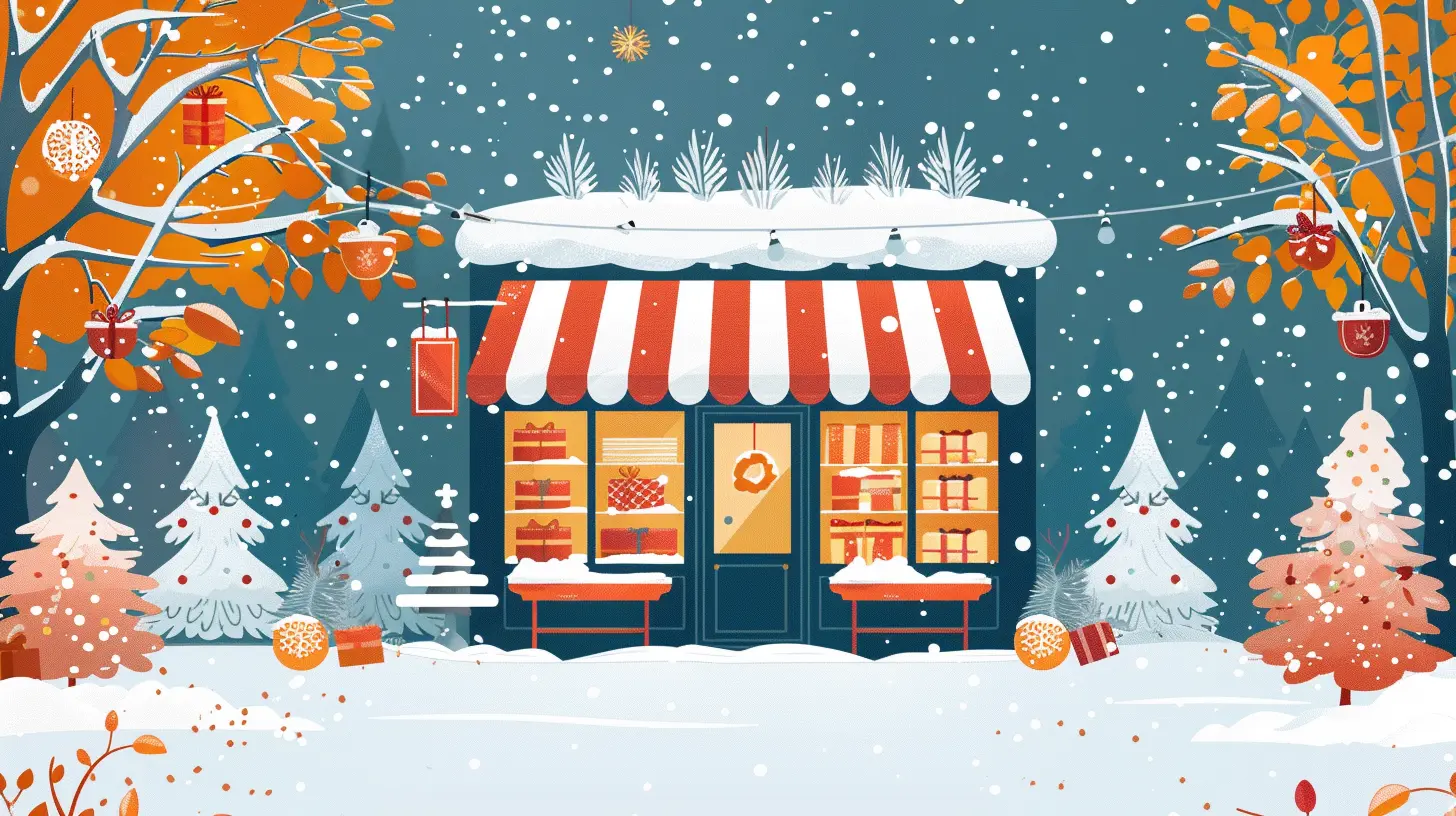Seasonal Pricing Tactics to Maximize Revenue Peaks
26 September 2025
If you’ve ever found yourself caught in a holiday shopping frenzy or booking a summer vacation at sky-high prices, you’re no stranger to seasonal pricing. It's not just by coincidence—it’s a calculated strategy businesses use to squeeze the most juice out of their revenue during peak times. For business owners, this tactic is like gold dust when implemented correctly. But how do you nail it without alienating your customers? And how do you ensure that your pricing tactics boost sales rather than backfire?
Let’s dive into everything you need to know about seasonal pricing and how to maximize those revenue peaks like a pro.
What Exactly is Seasonal Pricing?
Okay, let’s break it down. Seasonal pricing refers to adjusting your product or service prices based on demand patterns tied to seasons, holidays, special events, or even weather conditions. Think of pumpkin spice lattes in the fall or hotel rates during spring break. Businesses hike prices during high-demand periods and may lower them in off-seasons to keep sales steady.It’s like a game of supply and demand chess, and when done correctly, it can be a win-win: you earn a bigger slice of the profit pie while your customers feel they’re getting value at the right time. Sounds like a no-brainer, right? But, as with all strategies, execution is everything.
Why Seasonal Pricing Matters
Let’s face it: consumer behavior changes with the seasons. People are more willing to spend on certain products or services depending on the time of year. For instance:- Holidays: Who isn’t splurging on gifts and decorations during Christmas?
- Weather: Ice cream sales soar in summer, while cozy blankets become a winter essential.
- Events: Concert tickets for a big-name artist sell like hotcakes when they first go live.
If you’re not adjusting your prices accordingly, you’re leaving money on the table. Seasonal pricing not only helps you capture the full potential of demand surges but also ensures you don’t get stuck with excess inventory during slow periods. 
The Art of Timing
Timing is everything when it comes to seasonal pricing. Start too early, and you risk scaring off customers who aren’t ready to splurge. Start too late, and you may miss the boat entirely.So, how do you time it just right?
1. Analyze Historical Data
Look back at your sales history. When do you typically see spikes or slumps? Use this data to predict customer behavior and plan your pricing adjustments.
2. Monitor Market Trends
Keep an eye on your competitors and industry trends. Are they rolling out sales early? Are prices creeping up as the season progresses?
3. Adapt to Consumer Buying Patterns
Some customers are planners, while others are last-minute shoppers. Consider tiered pricing strategies to capture both groups (more on this later). 
Proven Seasonal Pricing Tactics
Now that we’ve laid the groundwork, let’s get into the fun stuff—pricing strategies that actually work.1. Dynamic Pricing
Dynamic pricing is exactly what it sounds like: prices that change dynamically based on demand. Airlines and hotels are pros at this one. The higher the demand, the higher the price.For instance, an Airbnb host might charge double the usual rate during Christmas in a tourist hotspot. If you’re running an e-commerce store, flash sales during peak shopping periods can work wonders.
Quick Tip:
Use pricing software to automate dynamic pricing. This ensures you’re not eyeballing demand manually—it’s smarter and faster.2. Bundling and Upselling
Want to move more products while increasing per-customer revenue? Offer bundles. Think “buy two, get one free” or packages with complementary items.For example, a clothing store could bundle scarves with winter coats or offer a discounted skincare gift set for Mother’s Day.
Upselling works, too. Picture this: you’re at Starbucks, and the barista offers to add whipped cream and caramel drizzle for $0.50 extra. How are you possibly saying no to that?
3. Limited-Time Discounts
There’s nothing like urgency to nudge customers into action. Limited-time discounts during peak shopping periods—like a one-day flash sale on Black Friday—can create a sense of FOMO (fear of missing out).Pro Tip:
Advertise your sale early but make it clear the discount won’t last forever. “Ends at midnight!” is way more compelling than “Big Sale.”4. Tiered Pricing
Tiered pricing lets you cater to different customer groups based on their purchasing behavior. For example:- Early-bird pricing: Reward planners who shop ahead of the season with lower prices.
- Last-minute pricing: Offer discounts or perks to procrastinators who need what you’re selling right now.
You can even use premium pricing for exclusive or limited-edition products. People love feeling like they’re getting something “special.”
5. Scarcity Marketing
Ever notice how “limited stock” or “only 3 left!” makes you whip out your credit card faster? That’s scarcity marketing, and it works beautifully with seasonal pricing.Highlight low inventory levels or set limits on the availability of certain items. This encourages customers to buy now rather than later.
6. Off-Season Discounts
While the focus is on maximizing revenue peaks, don’t ignore the off-season. Offering discounts during quieter times can help maintain cash flow and move excess inventory.For instance, gyms often offer discounted memberships in the summer when people are more likely to work out outdoors. Outdoor gear stores might slash prices on snowboards right after winter ends.
Common Mistakes to Avoid
Before you jump on the seasonal pricing bandwagon, here are a few pitfalls to avoid:1. Overpricing
While higher demand justifies higher prices, don’t overdo it. Customers are savvy and can sniff out gouging a mile away.
2. Inconsistent Strategies
Sudden and unpredictable changes to your pricing can confuse or frustrate customers. Have a clear plan and stick to it.
3. Ignoring Customer Perception
If your prices shoot up too obviously during peak times, customers may feel exploited. Offer value alongside increased prices, like premium packaging or added services.
Measuring Success
All the strategies in the world are pointless if you’re not tracking how well they’re working. Measure your success by:- Monitoring sales volume during peak periods.
- Tracking profit margins to ensure increased prices aren’t scaring off customers.
- Analyzing customer feedback about pricing (positive or negative).
Use this data to refine your tactics for the next season.
Wrapping It Up
Seasonal pricing is more than just slapping higher price tags on your products during popular seasons. It’s about finding that sweet spot where customer demand meets business profitability. With careful planning, timely adjustments, and a dash of creativity, you can turn those seasonal spikes into powerful revenue drivers.And remember, this isn’t a one-size-fits-all strategy. What works for a beachside ice cream stand may not work for a high-end jewelry store. Experiment, analyze, and tweak your approach over time.
So, are you ready to embrace seasonal pricing and ride those revenue waves? Your peak seasons will thank you.
all images in this post were generated using AI tools
Category:
Pricing StrategiesAuthor:

Lily Pacheco
Discussion
rate this article
1 comments
Raine Coleman
Seasonal pricing is a powerful strategy to boost revenue and engage customers. By aligning your pricing with market demand and seasonal trends, you not only enhance profitability but also strengthen customer loyalty. Embrace these tactics to unlock your business’s true potential this season!
October 5, 2025 at 11:49 AM

Lily Pacheco
Thank you for your insightful comment! I completely agree that aligning pricing with seasonal trends can significantly enhance both revenue and customer loyalty. Embracing these strategies is key to maximizing business potential.


